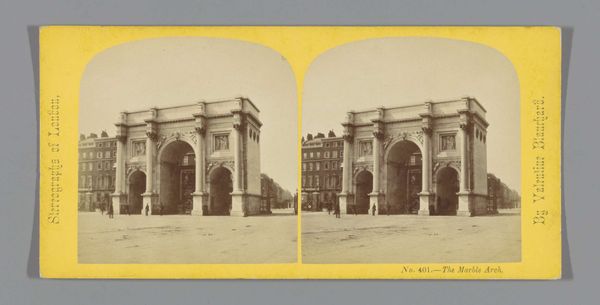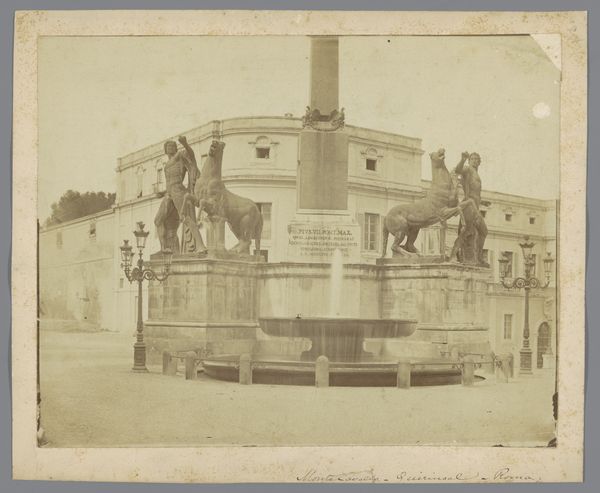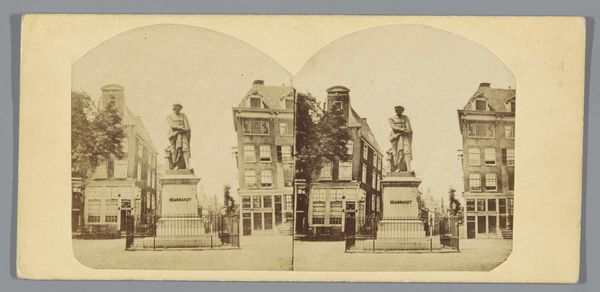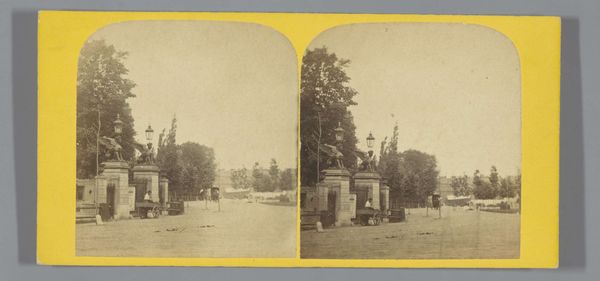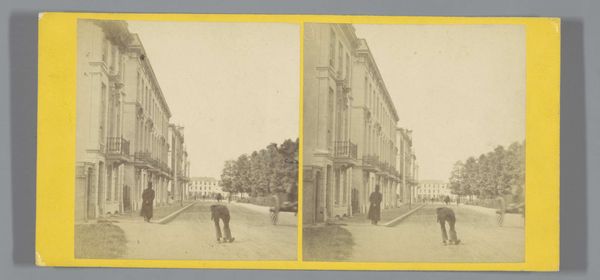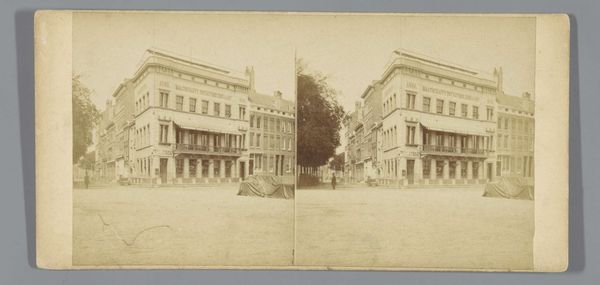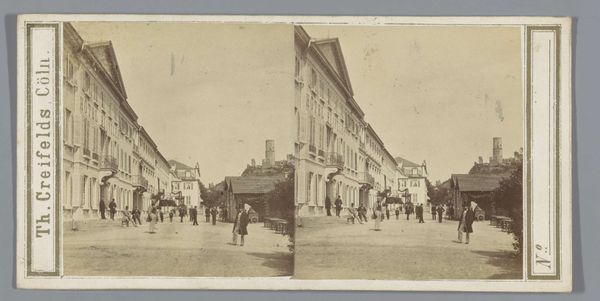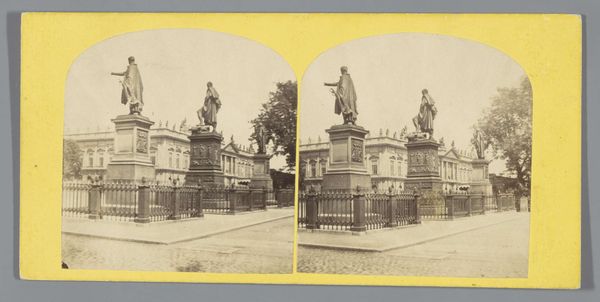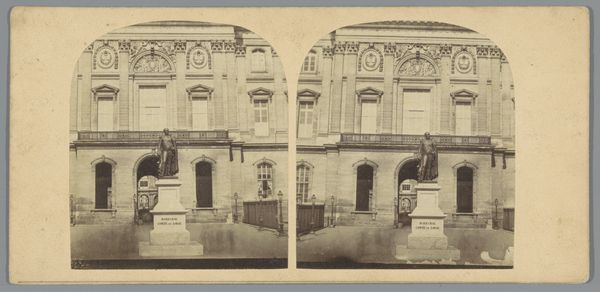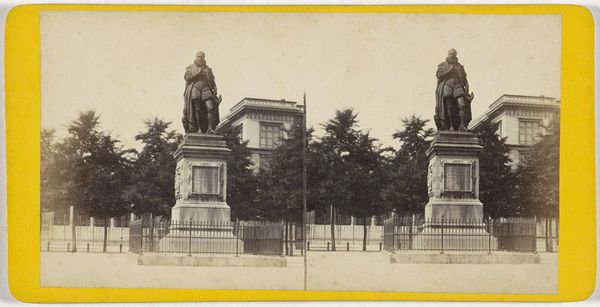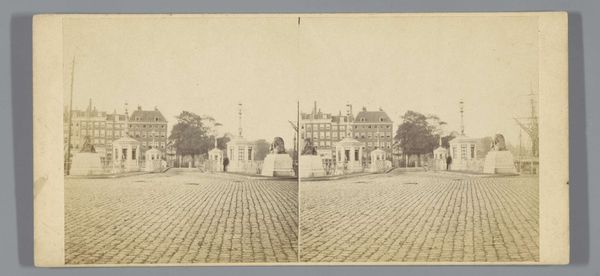
Ruiterstandbeeld van Willem van Oranje bij Paleis Noordeinde 1859 - 1865
0:00
0:00
photography, site-specific, gelatin-silver-print
#
portrait
#
photography
#
site-specific
#
gelatin-silver-print
#
cityscape
#
realism
Dimensions: height 84 mm, width 169 mm
Copyright: Rijks Museum: Open Domain
Curator: Pieter Oosterhuis created this photographic image between 1859 and 1865. It's titled "Ruiterstandbeeld van Willem van Oranje bij Paleis Noordeinde," or, "Equestrian statue of William of Orange at Noordeinde Palace." Editor: My first impression is one of formality and stillness. The composition is symmetrical, lending a sense of order and permanence to the scene. Curator: Absolutely. Oosterhuis was capturing not just an artwork but also a symbol deeply embedded in the Dutch national identity. William of Orange represents a pivotal figure in the Netherlands' struggle for independence, and his statue here anchors the palace in a history of revolution and nation-building. This resonates with the broader 19th-century trends of memorializing national heroes. Editor: Note the interplay of light and shadow which lends depth to the photograph despite its age. It emphasizes the monumentality of the statue. How the photographer uses perspective lines draw the viewer's eye towards the background. Curator: It's interesting to think about the context of its creation as a site-specific photograph; it invites reflection on how public spaces are designed to reinforce specific historical narratives and power structures. What does it mean for a public monument to be captured and circulated in this manner? Whose story is really being told here? Editor: The textures are surprisingly vivid for a gelatin silver print of that era. One notices this in the stone work, the surfaces of the buildings, and of course the equestrian statue itself. The formal realism almost gives it the look of being hyperreal. Curator: The decision to photograph this particular statue and its location at this historical juncture would say volumes about how collective memory functions. What pasts do societies decide to emphasize, and for what reasons? What might the average viewer make of this now? Editor: It allows me to consider how certain aspects of realism lend themselves well to national symbols. It's the marriage of material and form working at its most perfect alignment. Curator: It’s clear Oosterhuis' image provokes layered and thought-provoking dialogues spanning time. Editor: A beautiful convergence of form and concept indeed.
Comments
No comments
Be the first to comment and join the conversation on the ultimate creative platform.
